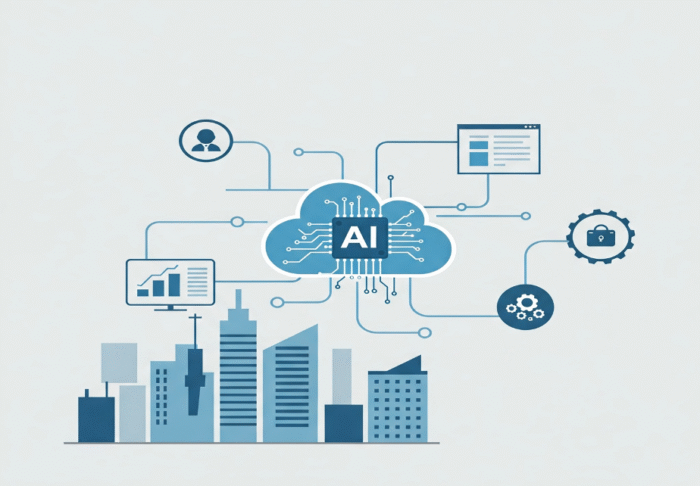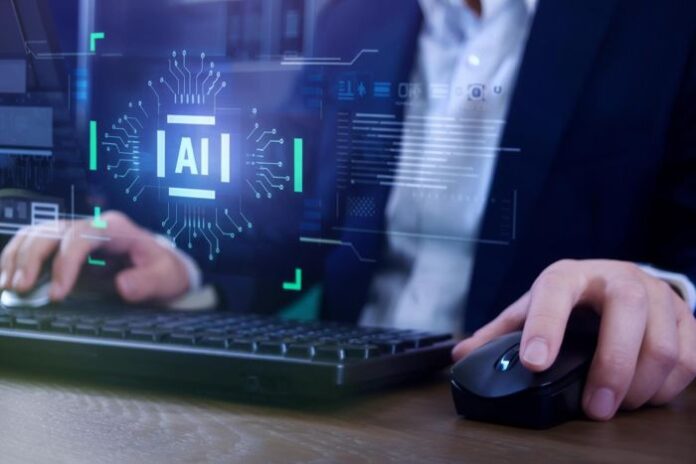The integration of artificial intelligence (AI) into enterprise operations is no longer a futuristic promise, it’s a present-day reality reshaping how businesses manage their internal systems. While much of the AI spotlight falls on customer-facing innovations, the real transformation is happening behind the scenes, in the intricate machinery of HR, device management, employee experience, supply chain, & network optimization, etc. At the forefront of this shift is Abhiraj Singh Chouhan, a seasoned enterprise AI specialist and product leader, known for architecting impactful machine learning solutions across high-stakes business environments. Drawing from his hands-on experience deploying scalable AI systems, Abhiraj sheds light on real-world use cases that demonstrate how smart algorithms are moving from buzzwords to bottom-line drivers.
This isn’t about superficial efficiency gains; it’s about leveraging cutting-edge technology to redefine operational paradigms. Let’s explore how AI is driving this shift, with a sharp focus on the tech itself and its tangible impact
Table of contents
HR Tech: From Paperwork to Predictive Analytics

Talent management, recruitment, onboarding, & retention remains a high-stakes challenge for enterprises. Traditional methods, reliant on manual processes and intuition, are being replaced by AI systems that apply analytical rigor to human capital decisions. Modern recruitment tools, for example, now deploy machine learning to scan thousands of resumes in real time, cross-referencing skills, experience, and organizational culture metrics to surface ideal candidates faster than human teams.
The tech goes deeper. Platforms now forecast attrition risks by mining performance data, engagement metrics, and even communication patterns (like email tone analysis) to flag flight risks months in advance. These insights let HR teams proactively address concerns through tailored retention plans, like upskilling initiatives, mentorship pairings, or role adjustments, reducing turnover before it hits operational continuity. Onboarding, too, is getting smarter: NLP-driven systems auto-generate customized training modules and resource kits for hires, slashing ramp-up times. All this results in streamlined talent pipelines, stabilized teams, and heightened productivity, all powered by data and. code, not guesswork.
Device Management: Precision Through Predictive Systems
Managing enterprise device fleets, laptops, PCs, & tablets, etc. has long been a logistical minefield. Outdated methods relying on manual forecasts or historical averages often lead to overstocked inventory or deployment bottlenecks. Enter AI-driven predictive analytics, which replaces guesswork with mathematical rigor.
Abhiraj Singh shared his implementation of Meta’s open-source Prophet tool as a game-changer. “Prophet uses Bayesian modeling to analyze time-series data, such as quarterly hiring surges or annual device refresh cycles,” he explains. By processing variables like past orders, onboarding timelines, and warranty expirations, Prophet generates demand forecasts far more nuanced than static spreadsheets. He mentioned that, when prophet is combined with XGBoost, a gradient-boosting algorithm, it factors in department-specific trends like, engineering teams preferring high-spec laptops, to sharpen accuracy.
The innovation doesn’t end there. He also brought up a point of implementing reinforcement learning (RL) systems to take these predictions further, dynamically adjusting procurement based on real-time vendor delays or budget shifts. A 2023 IDC study highlights the stakes: poor device management costs firms $1,500 per employee yearly. AI optimization could reclaim much of this loss.
Network Management: From Reactive Alerts to Predictive Defense
Enterprise networks, while critical, remain fragile under legacy systems. Tools like SNMP (Simple Network Management Protocol) trigger alerts only after crossing preset thresholds, say, 90% bandwidth usage, but fail to detect brewing crises. “You’re stuck waiting for metrics like uptime or error rates to spike,” notes Abhiraj. By then, productivity nosedives; Cisco estimates downtime at $300,000 hourly.
AI flips this script. Algorithms like DeepAR, a recurrent neural network, predict traffic surges, such as Monday morning login rushes, allowing preemptive bandwidth allocation. Abhiraj shared how he deployed anomaly detection models, including Isolation Forest and Variational Autoencoders (VAEs), scan latency, packet loss, and throughput data can be utilized to spot threats like misconfigured routers or early-stage DDoS attacks before they escalate.
Integration is key. SaaS providers now embed these AI tools, pulling real-time data from firewalls, switches, and cloud endpoints via REST or gRPC APIs. A 2024 Forrester report suggests AI-powered systems cut downtime by 35%, saving enterprises millions. Imagine an AI rerouting traffic to low-latency pathways, pausing non-essential updates during peak hours, or alerting admins to hardware vulnerabilities, all autonomously.
“This isn’t incremental improvement,” Chouhan emphasizes. “It’s a paradigm shift from scrambling to fix outages to preventing them entirely.” In an era where seamless connectivity defines competitiveness, AI isn’t just an upgrade, it’s the new backbone of enterprise resilience.
Obstacles and Innovations in Enterprise Operations AI Adoption
Abhiraj highlighted the challenges of implementing AI, noting that flawed data inputs—such as incomplete or poorly structured data, can undermine even strong models. The saying “garbage in, garbage out” aptly describes this issue. Legacy infrastructure compounds the problem: aging systems with proprietary formats often clash with modern AI frameworks, while training complex models demands significant computational firepower (GPU/TPU clusters). A 2023 MIT analysis revealed that 60% of enterprise AI initiatives stall not from flawed algorithms but from fractured data pipelines.
Progress, however, is accelerating. Federated learning, a technique enabling AI training across decentralized datasets, now allows organizations to collaborate on model development without sharing sensitive data. Meanwhile, low-code AI platforms are empowering non-technical teams to build custom tools, bypassing traditional coding barriers.
Strategic Impact: Beyond Enterprise Operations Tweaks
The true value of AI lies in its ability to rewire enterprise DNA. Supply chain teams now deploy LSTM networks to forecast inventory shifts weeks ahead, while HR departments apply survival analysis (a statistical method borrowed from healthcare) to predict and preempt employee attrition. McKinsey estimates such behind-the-scenes AI applications could generate $4 trillion in annual economic value by 2030.
Abhiraj Singh underscores the strategic imperative: “Winning companies aren’t just using AI for flashy customer-facing products, they’re rebuilding their operational core. That internal transformation directly fuels superior customer outcomes.” By optimizing unseen processes, predictive maintenance, dynamic logistics, and risk mitigation, enterprises unlock efficiencies that ripple outward, enhancing reliability and user experiences.
This isn’t incremental change. AI’s fusion with enterprise systems via adaptive algorithms, real-time APIs, and self-correcting workflows, marks a tectonic shift in how businesses function. From supply chains that anticipate disruptions to networks that self-heal, the technology is evolving from a supportive tool to a central nervous system. As models grow more sophisticated and integration barriers fall, enterprise operations that master this transition won’t just survive, they’ll define the next era of industrial competition.











